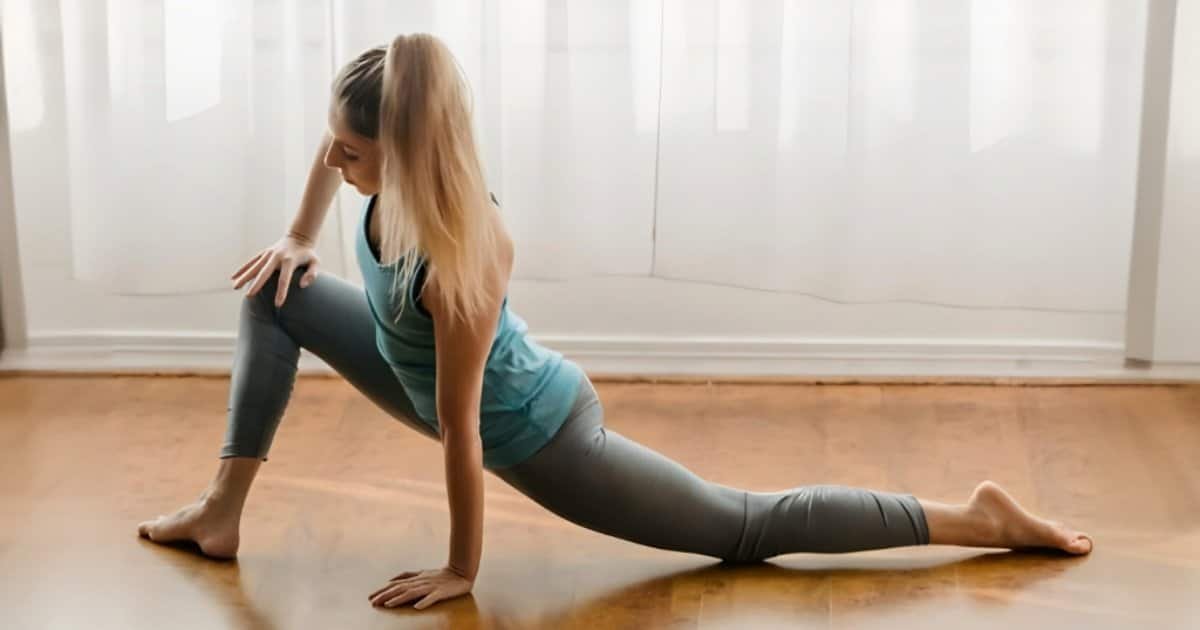Listen to this article:
Key Takeaway
Lizard Pose deeply stretches hips, hamstrings, and glutes, enhancing flexibility and releasing tension.
| LIZARD POSE | |
|---|---|
| Alternate name: | Utthan Pristhasana |
| Difficulty level: | Intermediate |
| Pose category: | Hip opener |
| Muscle groups: | Shoulders (Upper Body) Hip Flexors (Hips) Abdominal Muscles (Core) Glutes (Hips) Spine (Back) |
| Physical benefits: | Increases flexibility in hips, hamstrings, and glutes; strengthens shoulders and spine. |
| Therapeutic applications: | Reduces lower back pain; improves flexibility and mobility. |
| Preparatory poses: | Downward Facing Dog (Adho Mukha Svanasana) Bound Angle Pose (Baddha Konasana) Cradle Pose (Hindolasana) |
| Counterposes that follow well: | Pigeon Pose (Eka Pada Rajakapotasana) Head to Knee Pose (Janu Sirsasana) |
| Chakras activated: | Sacral Chakra (Svadhishthana) |
| Most helpful prop: |  Yoga blocks under forearms - deepens stretch, maintains alignment. See latest price |
Is there anything better than a deep stretch after an intense workout, or a long day of sitting? If you feel like you need some release in your life, then Lizard Pose is a posture you should definitely include in your yoga practice!
Lizard Pose, or Utthan Pristhasana, is an intermediate yoga pose which targets the hips, hamstrings, and glutes. It offers a pretty intense stretch and might even be used as a peak pose in some hip-opening yoga sequences. Lizard Pose is also commonly used as a preparatory pose for more intense hip openers or hamstring stretches, such as Pigeon or the Splits.
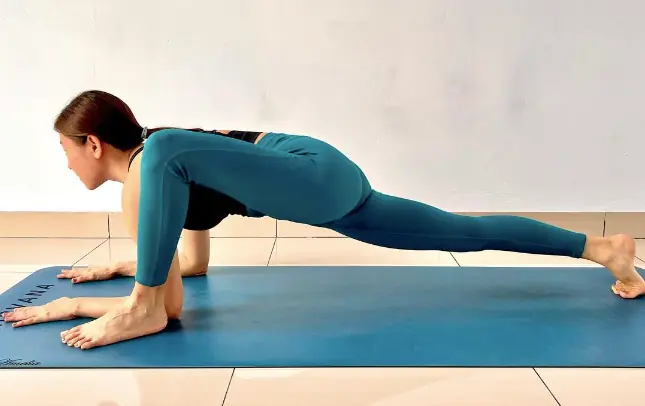
Its Sanskrit name offers a basic description of the pose: utthan, meaning stretched out, pristha, referring to the back of the body, and asana or pose. This translation illustrates the long line of the body in a lunge position, from the back heel to the top of the head. In English, we call this stretch Lizard Pose (or sometimes Gecko Pose), as it resembles a lizard stretched out, sunning itself.
So many people begin a yoga practice hoping to become more flexible, or improve their mobility. Practicing Lizard Pose is one of the best ways to achieve these goals as it brings length to the whole body and brings release to commonly tense muscle groups.
Contents
- 1 Benefits of Lizard Pose (Utthan Pristhasana)
- 2 Exploring the Mental Benefits of Lizard Pose
- 3 How to do Lizard Pose (Utthan Pristhasana)
- 4 How to Modify Lizard Pose (Utthan Pristhasana)
- 5 Lizard Pose Variations
- 6 Preparatory Poses to Warm Up for Lizard Pose
- 7 Follow Up Poses to Practice After Lizard Pose
- 8 The Impact of Lizard Pose on Mental Well-being
- 9 Common Questions About Lizard Pose
Benefits of Lizard Pose (Utthan Pristhasana)
Along with improving overall flexibility, there are many other benefits Lizard Pose provides. Just focusing on the physical body for a moment, here are some specific musculoskeletal effects of Lizard Pose:
- Strengthens shoulders
- Lengthens and releases hip flexors, reducing lower back pain
- Stretches the abdominal muscles
- Reverses negative effects of sitting for long periods
- Stretches and strengthens the glutes and spine, improving posture
- Prevents muscle stiffness after intense physical activities like running
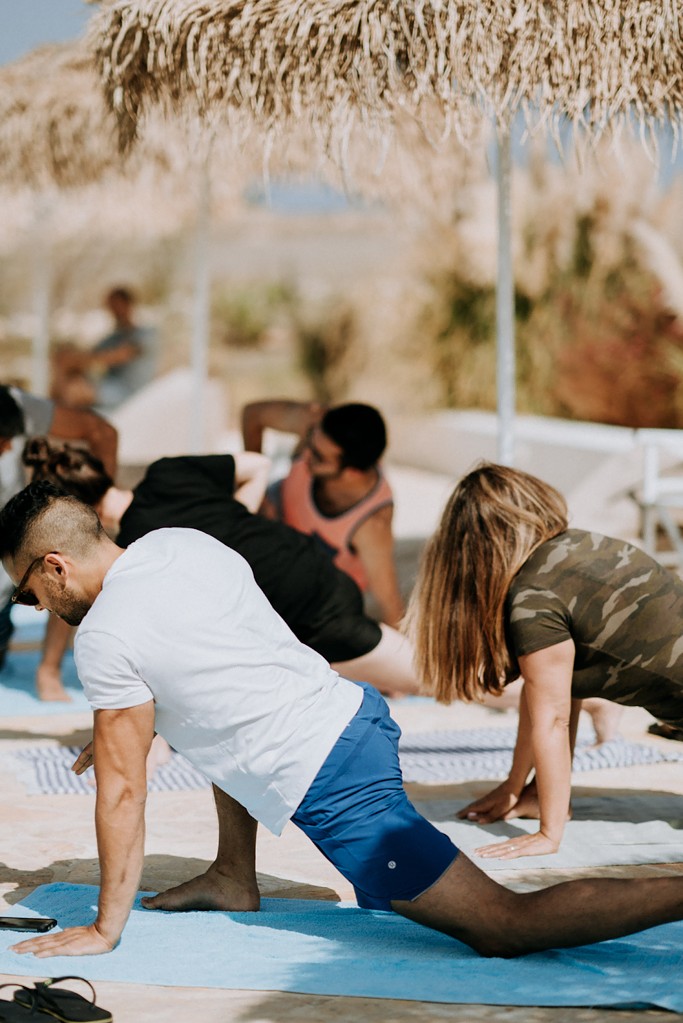
As with many other intense poses, the positive impact of Lizard or Gecko Pose goes much deeper. This pose offers several internal, energetic, and mental benefits as well. With regular practice, Lizard Pose:
- Stimulates internal organs
- Tones and activates reproductive organs
- Stimulates creativity by targeting the sacral chakra in lower abdomen
- Releases stress
Even though your yoga teacher will likely refer to Lizard as a hip opener, it clearly is an amazing yoga pose for your entire body!
Exploring the Mental Benefits of Lizard Pose
When delving into the practice of yoga, our focus often gravitates towards the aspects. However, it’s important to acknowledge that there’s a realm, beyond that. Let’s take a moment to consider Lizard Pose, for instance. This posture provides a stretch for your hips. Strengthens your body. Yet have you ever pondered its impact on your state of mind and emotions? Although not commonly discussed in mainstream articles, it is truly fascinating.
Lizard Pose encompasses more than a physical stretch; it becomes an inner journey that engages both your mental and emotional realms. While assuming this pose, you aren’t merely opening up your hips; you are also opening up your mind. It presents you with challenges that push you to your limits. Embracing these challenges leads to lessons in patience and acceptance. You cultivate the ability to find contentment, with where you stand in life, even if it differs from where you aspire to be.
Moreover, this particular pose possesses the ability to release burdens held within our hips—the very areas known for harboring stress and negative emotions. As we engage in the stretching motion of Lizard Pose we are not only liberating muscles but also letting go of emotional baggage that weighs us down.
It’s, like a therapy session but on a yoga mat.
We shouldn’t overlook the clarity it brings. When you hold the pose and focus on your breathing it requires concentration. This helps clear your mind reducing stress and anxiety. It’s a moment of mindfulness when you’re fully in the present.
So whenever you do Lizard Pose remember that it’s not, about the physical advantages. It’s an opportunity to delve into yourself, let go of what does not serve you, and embrace a state of mental and emotional well-being.
How to do Lizard Pose (Utthan Pristhasana)
If you are hoping to focus on flexibility, you’ll likely encounter Lizard Pose in the yoga sequences you choose to practice. To be sure you understand the proper alignment of Lizard Pose, follow these step-by-step instructions.
- Begin in Downward Facing Dog Pose: bring your body into the shape of an upside-down V, with your hands planted at a shoulder-width distance, middle fingers pointing forward.
Your feet should be separated at a hip-width distance. Press your chest toward your thighs as you reach your tailbone up towards the sky. Keep a soft bend in your knees if your hamstrings are tight, to ensure you keep length in your spine as you press your heels toward the floor. - From your Downward Dog, lift your right leg and step your right foot toward the top right corner of your yoga mat, to the outside of your right hand.
- Align your right knee over the ankle, and press your hips forward as you bend into your right leg, coming into a runner’s lunge position.
- Keeping your back toes tucked, and align your left heel over the toes of your left foot. Keep your hips squared off (think about drawing your left hip forward, right hip back).
- Stay in this runner’s lunge position with your arms straight if you are already feeling a deep stretch in your hips.
- After a couple breaths, try to lower yourself down to your elbows. Press your forearms and palms into the floor, as you would in Forearm Plank Pose.
- Gaze forward and down, just beyond your hands, keeping the back of the neck in a comfortable position.
- Press into your back heel to keep your extended left leg active.
- Stay in your fullest expression of Lizard Pose for 5-10 breaths. When you are ready to come out of the pose, first plant your hands underneath your shoulders and straighten your arms. Then, step your right foot back to return to Down Dog.
- Stay in Downward Dog for a few breaths.
- Repeat Lizard Pose on your other side, stepping your left foot forward.
If you’d like to follow along with a visual demonstration and audio instructions, check out this short Lizard Pose tutorial:
Contraindications
If you are experiencing any of the following medical issues, you should practice a more gentle hip opener, or use a modification for Utthan Pristhasana. Skip Lizard Pose or try a modification detailed below if you’ve had recent injury or surgery to your knee, hip, or weak shoulders. Additionally, if you have severe lower back pain or intense sciatica, you should try a less intense hip stretch.
How to Modify Lizard Pose (Utthan Pristhasana)
As with many yoga poses, there are ways to modify Lizard Pose in order to fit your individual level. Remember that the goal is to release your glutes, hips, and hamstrings; if you are very tight, a modified version of Lizard Pose might be enough to give you the intended stretch. Here are a few ways you might make this pose more accessible to you in your yoga practice:
Using Yoga Props
- Yoga blocks: if you can’t quite get your forearms to the floor but want to deepen your stretch, place one yoga block under each forearm to split the difference to the floor.

- Blanket: to avoid discomfort in your extended leg when you lower it to the floor, place a folded blanket under back knee.
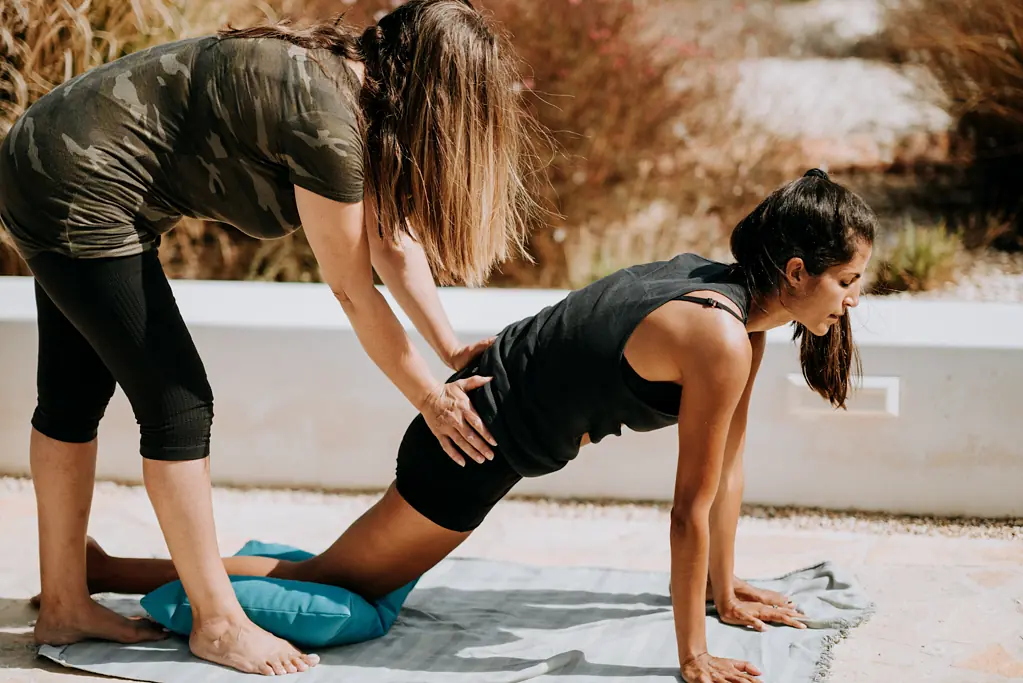
Half Happy Baby Pose as a Modified Lizard
Lizard is one of the more intense poses for opening the hips. If you are just beginning to work on flexibility and range of motion, try Half Happy Baby Pose. Interestingly, you will notice that your body is basically in the same position as Lizard Pose flipped upside-down. So, you might think of Half Happy Baby as a less intense supine (laying down) version of the same stretch! Pretty cool, right?
This also a good option for you if you’ve had a recent shoulder or wrist injury and cannot put weight on your hands.
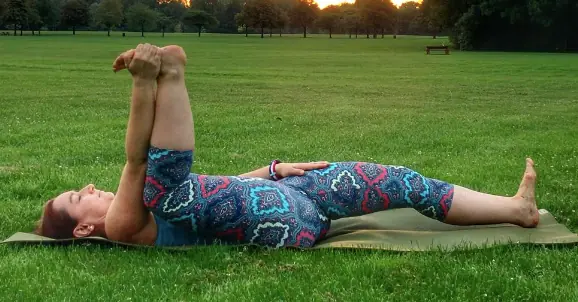
- Begin lying on your back with your knees bent and feet planted on the floor.
- Bring your right knee in to your chest. Open your leg to the side, so your knee is pointing toward your armpit.
- Then, take your foot toward the sky. With your right hand, take ahold of your right ankle, or grip your foot from the outer edge.
- Keep your right foot flexed and use the strength of your arm to gradually pull your knee closer to the floor, to the outside of your body.
- Extend your left leg all the way along the floor, so your hip flexors lengthen.
- Hold your Half Happy Baby pose for up to 10 breaths, then release your leg gently down into Savasana and rest.
- When you are ready, reset with your knees bent and feet planted, and repeat Half Happy Baby Pose on your left side.
Lizard Pose Variations
Ready to take your Lizard Pose to the next level? Add a quad stretch, shoulder opener, or arm balance with these advanced variations!
Twisted Lizard Pose
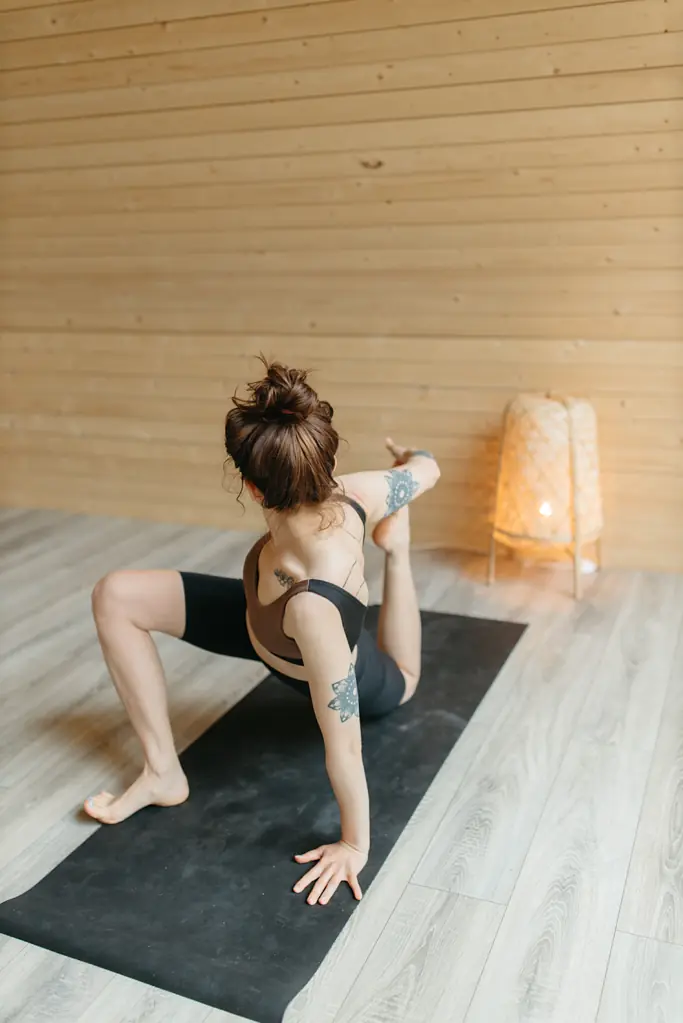
This is a juicy variation of Lizard Pose that adds a quad stretch, spinal twist, as well as a chest and shoulder opener.
- From Downward Facing Dog Pose, bring your left leg forward, stepping your left foot to the outside of your left hand.
- As you press your hips forward, gently lower your right knee to the floor.
- Keep your hands planted on the floor with your arms straight.
- Spin your left toes out about 45-degrees and drop down onto the outer edge of your left foot, letting your front knee fall open to the side.
- Bend your right leg, curling your right foot towards your glutes.
- Reach your left arm back and catch your right foot in your hand. Keep your right arm straight, pressing your palm into the floor.
- Create resistance by kicking your right foot into your left hand, as you try to pull your foot towards your glutes. With this resistance, open across your chest and the front of your left shoulder, twisting your upper body to your left side.
- Hold your Twisted Lizard Pose for a few deep breaths. When you’re ready to exit the pose, gently let go of your back foot and lower it gently to the floor. Release your twist and plant both hands directly underneath your shoulders to move back into Down Dog.
- After a few breaths in Downward Facing Dog, repeat your Twisted Lizard on your other side, this time bringing the right leg forward and twisting open to the right.
Bound Lizard Pose
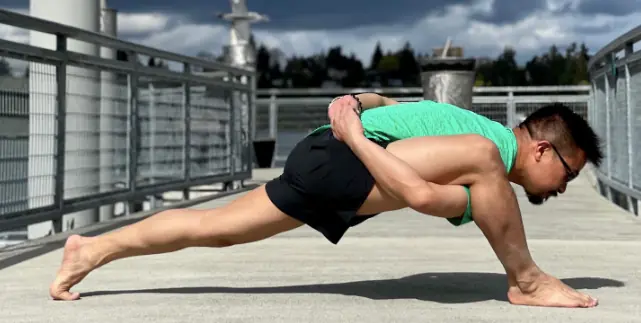
Practice balance and stability while opening your chest and shoulders with a bind in the upper body. This Lizard Pose variation will also help you work your way up to Flying Lizard!
- Bring yourself into an active version of Lizard Pose: keep your palms on the floor and ground down through the front foot while pressing out through the back heel and lift the kneecap of your back leg to engage your leg muscles.
- Bring your same-side shoulder to your front knee. Wrap your arm under your front thigh.
- Reach your opposite arm across your lower back and connect your hands behind you.
- Engage your core and squeeze with your inner thigh muscles to maintain stability in your bind. Keep length in the spine by reaching the crown of the head forward.
- Hold your bind for 3-5 breaths, then release and return to Downward Facing Dog. Then, repeat Bound Lizard Pose on your second side.
Flying Lizard Pose
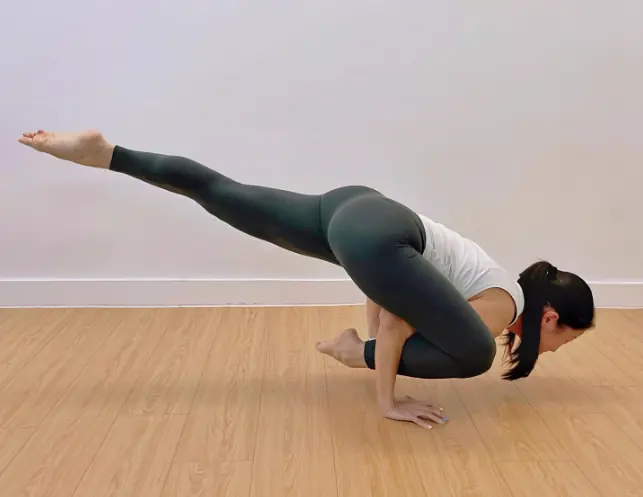
If you’re looking to add a new pose into your yoga practice, try this advanced Lizard Pose variation! Flying Lizard is an arm balance that will strengthen your upper body and core.
- Come into standard Lizard Pose, with your palms on the floor.
- Lift the heel of your front foot. Bend your elbows and work your same-side shoulder under your front knee.
- Create a shelf with your arms, elbows bent at about a 90-degree angle. Your upper body will be in a position similar to Chaturanga.
- Lift your back knee from the floor. Engage your abdominal muscles by pulling the navel in and up.
- Begin to shift your weight forward into your hands. Bend your front leg, squeezing your front foot in towards your body so your front toes are hovering a few inches above the floor.
- Set your gaze in front of you as you continue to shift your weight forward, under your back leg floats off of the floor.
- Keep your breath steady and balance for a few breaths. Then, gently place your extended leg back on the floor and and return to Down Dog, or Child’s Pose to rest your arms. When you’re ready, repeat Flying Lizard Pose on your other side.
Preparatory Poses to Warm Up for Lizard Pose
For such a deep hip stretch, so you’ll want to be properly warmed up before you practice Lizard Pose. The following yoga poses will help you stretch your legs and open your hips gradually in preparation for Utthan Pristhasana.
Downward Facing Dog
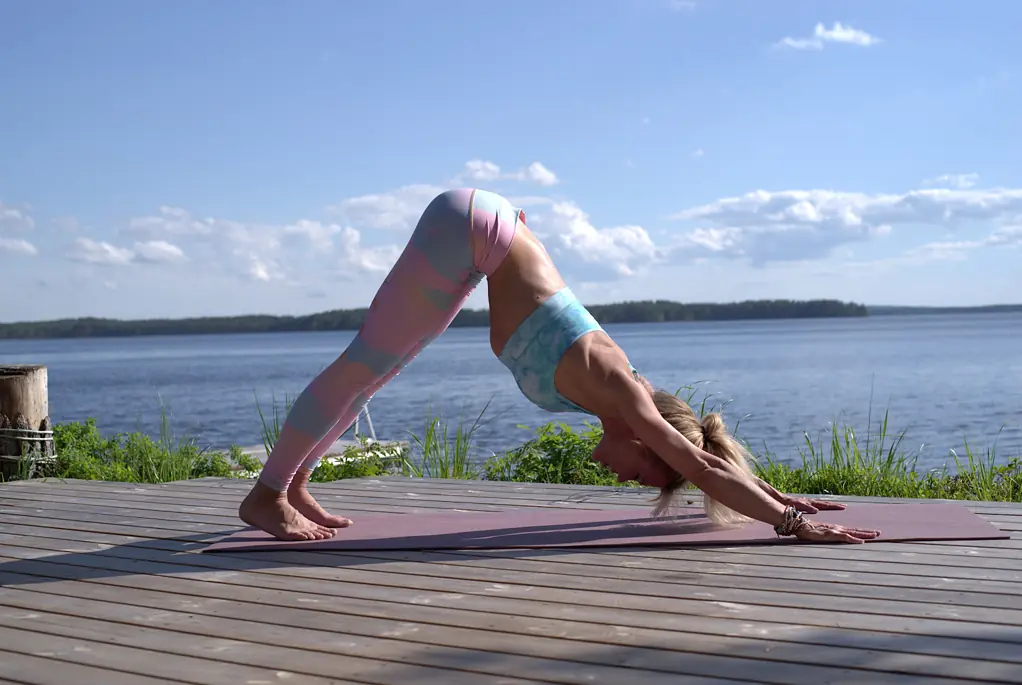
Downward Facing Dog Pose lengthens the back of your legs as well as your spine, and will be your starting position for moving into Lizard Pose. To review proper alignment, check out our Downward Dog Pose guide!
Bound Angle Pose
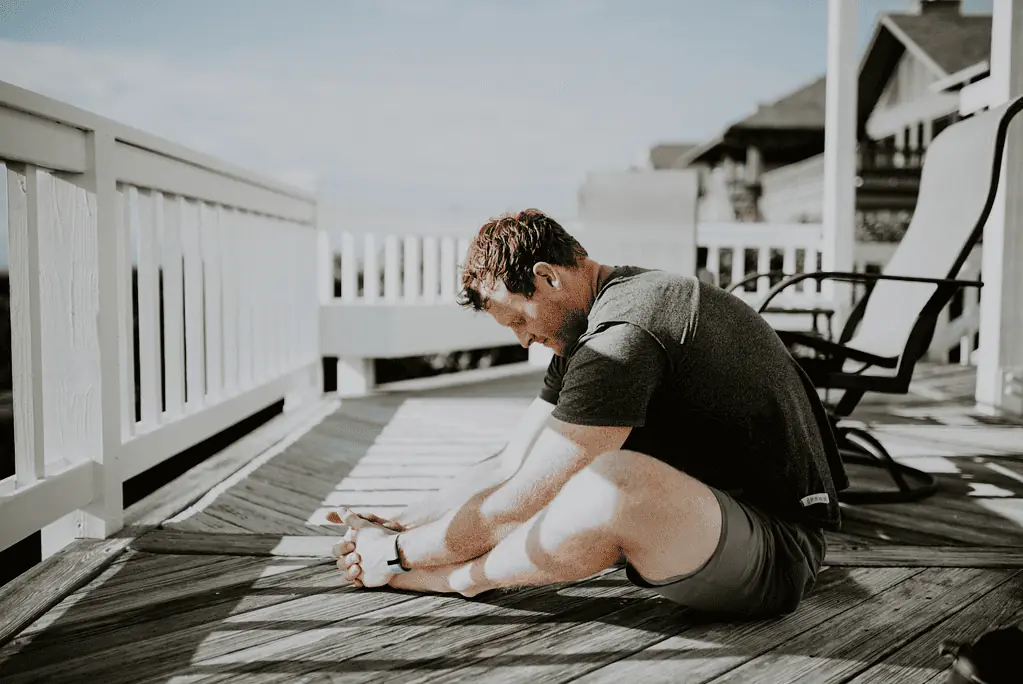
Bound Angle or Butterfly Stretch is an essential warm up for Lizard Pose that opens up your hips and inner thighs. To go a bit deeper, practice the Bound Angle forward bend variation. Take a look at our Bound Angle Pose breakdown to learn more!
Cradle Pose
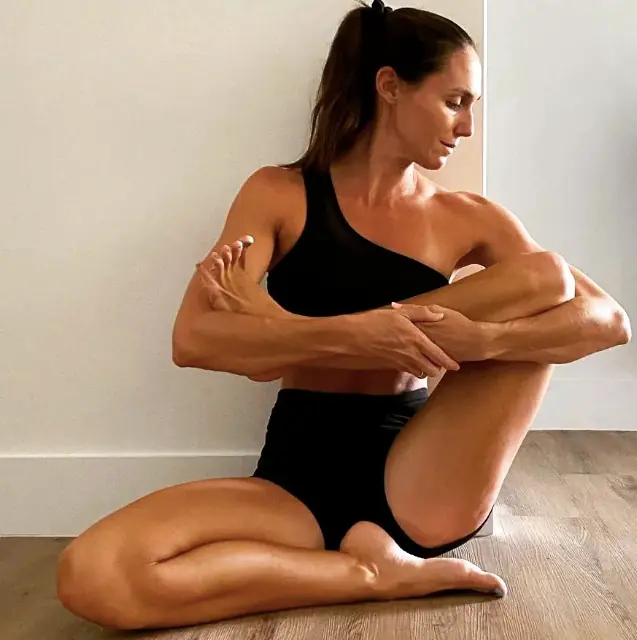
Before you practice Lizard Pose, this stretch will help gently open your inner thighs, hamstrings, and hips.
- Begin seated in Easy Pose, with your legs folded in. Sit as tall as you can with your spine straight.
- Reach down with your right arm and pick up your left leg. Bring your left foot into the crux of your right elbow.
- Wrap your left arm around the outside of your left knee, cradling your left leg in both hands.
- Slowly and gently, begin to rock your leg right to left across the front of your body, as if you are rocking a baby in your arms.
- After 7-10 breaths, release your leg and carefully place it back down to the floor.
- Repeat Cradle Pose on your other side, picking up your right foot.
Follow Up Poses to Practice After Lizard Pose
Working on your lower body flexibility? Try these follow-up stretches after practicing Lizard Pose!
Pigeon Pose
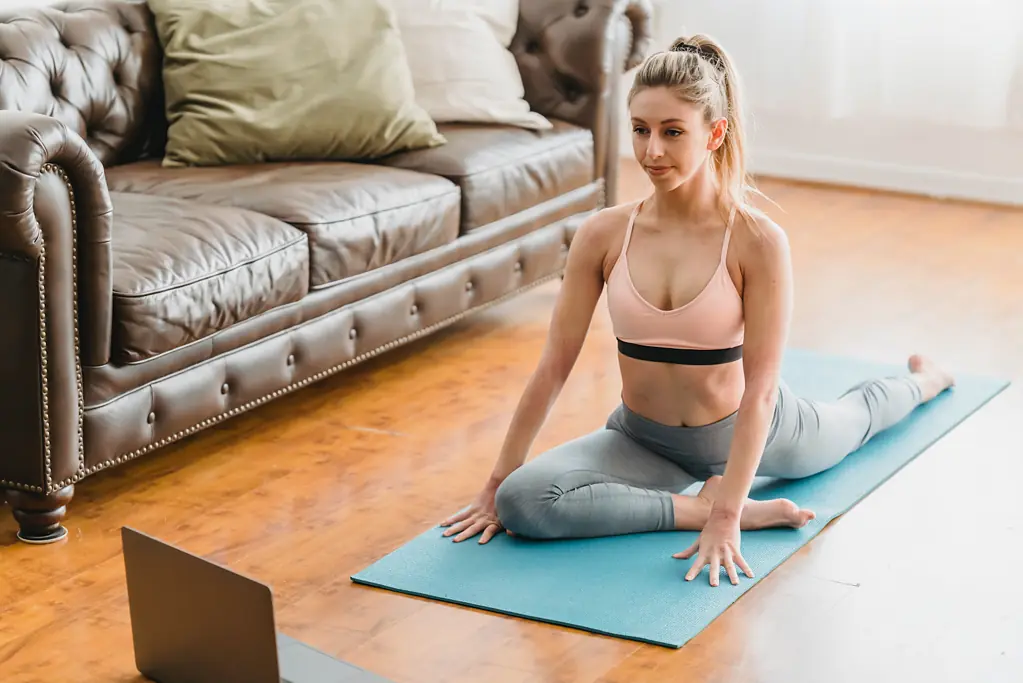
Yes, Lizard Pose is a deep stretch for your hips — but it also uses engagement of the leg muscles. If you are aiming to increase your flexibility, try practicing Pigeon Pose afterwards. This will allow your glutes and hips fully release into an even deeper stretch. Follow the step-by-step instructions in our Pigeon Pose guide for proper alignment!
Head to Knee Pose
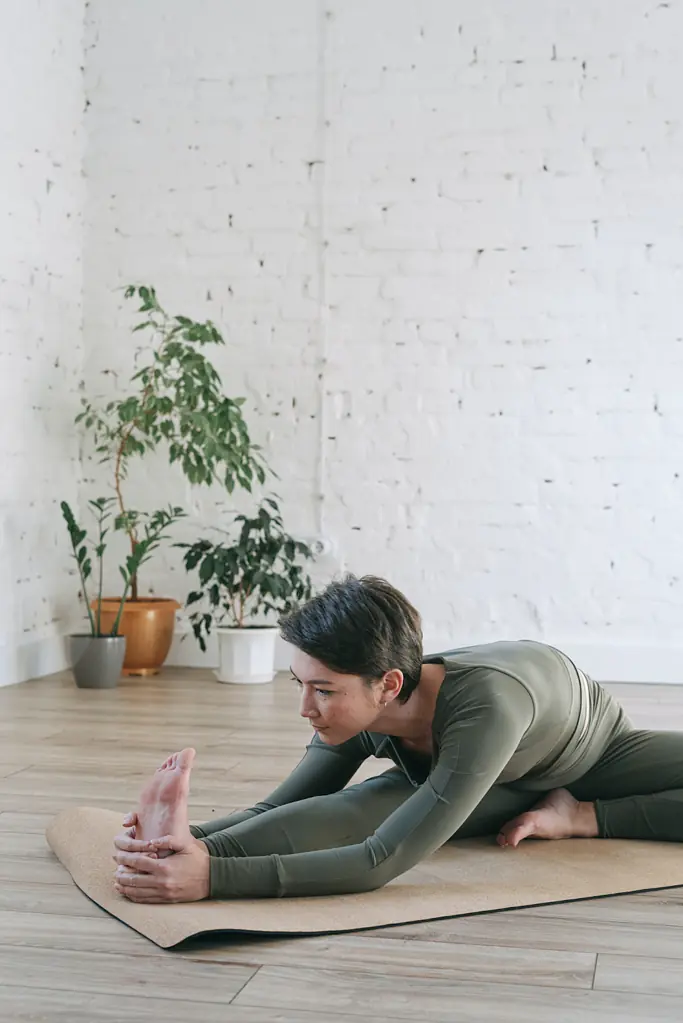
Since your inner thighs and hamstrings will be nice and open after Lizard Pose, you might try another lower body stretch like Head to Knee Pose.
- Begin in Staff Pose, sitting tall with both legs extended in front of you.
- Bend your left knee, folding your leg in. Place your left foot to the inside of your right thigh.
- Pull your right toes back towards you, flexing your right foot.
- Breathe in and reach your arms up over your head as you grow taller through your spine.
- As you exhale, fold over your outstretched leg as you reach your arms forward to your shine, ankle, or foot.
- Hold this forward bend anywhere from 5-10 breaths, then return to an upright seated position. Straighten your left knee to return to Staff Pose. Then, repeat Head to Knee pose on your other side.
The Impact of Lizard Pose on Mental Well-being
Exploring the Mind-Body Relationship
Lizard Pose goes beyond stretching; it also has a profound effect on calming the mind. Engaging in this pose not only enhances flexibility but also provides an opportunity for mental relaxation. The practice of yoga poses such as Lizard Pose aids in reducing stress by directing focus toward breath and body awareness, thereby quieting the mind.
Alleviating Stress through Deep Stretching
Engaging in stretches, such as Lizard Pose, can have a soothing effect on both the body and mind. It helps alleviate tension not within muscles but within the mind. When your body feels more at ease, your mind often follows suit. This highlights the interconnectedness of our mental well-being; taking care of our bodies is synonymous with taking care of our minds. So when you find yourself practicing Lizard Pose, remember that it’s more than stretching your hips; it’s providing a respite, for your mind as well.
Pop quiz! 🧘🤔
Lizard Pose is only beneficial for improving flexibility.
You can use yoga blocks to modify Lizard Pose if you can not place your forearms on the floor.
Lizard Pose should not be attempted by yoga beginners.
Common Questions About Lizard Pose
What is the difference between Lizard Pose and Low Lunge Pose?
The main difference between a lunge and Lizard Pose is in the placement of the front foot. In Low Lunge pose, you bring your foot forward between your hands, while in Lizard, your front foot is placed to the outside of that hand.
Some yoga instructors may cue the back leg straight with the back knee lifted in either pose, or you might choose to place the back knee down.
What if I can’t place my forearms on the floor?
Remember the intention of the pose is to open and release the hip flexors, hamstrings, and glutes. As long as you are feeling the intended stretch, try not to worry so much about what the pose looks like. Never hesitate to try a modification in order to make the yoga pose work for you and your body!
Should my back be rounded or straight in Lizard Pose?
You should try to keep your spine as long as possible in Lizard, rather than rounding over. This might mean you should use a modification, like keeping your palms planted and arms straight, or placing blocks under your forearms.


